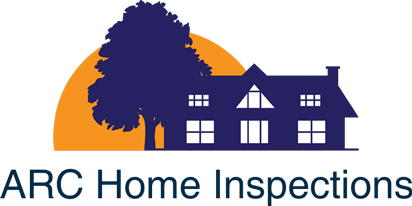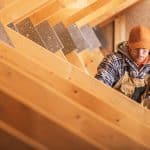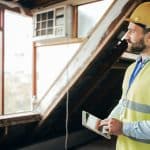Homebuyers and sellers in Mid Missouri face hidden risks that can undermine property value, family health, and regulatory compliance—yet a professional home inspection reveals these threats before they escalate. By integrating rigorous safety regulations, up-to-date building codes, and local home safety standards, a structured inspection identifies structural faults, electrical hazards, gas leaks, environmental toxins and code violations. This article explains why comprehensive inspections are essential, outlines the core areas covered by Arc Home Inspections, details who benefits most, highlights Arc’s unique approach, and walks you through scheduling an inspection. Understanding these themes ensures you make informed decisions and secure peace of mind.
Home Safety Inspections are Essential for Mid Missouri Properties
A home safety inspection is a systematic evaluation of a property’s condition that uncovers issues hidden behind walls, under floors, or within mechanical systems. By applying local building codes and safety regulations, inspectors verify that foundations, roofs, wiring, plumbing and ventilation meet or exceed home safety standards. This proactive examination prevents costly repairs and legal complications, allowing homeowners to address defects early and maintain property stability.
Home Inspections Reveal Hidden Dangers
Home inspections detect hazards that remain invisible to the untrained eye yet pose serious risk to occupants and equity.
- Faulty wiring and outdated consumer units that increase fire risk
- Elevated radon levels in basements or crawlspaces that threaten respiratory health[1]
- Carbon monoxide leaks from poorly maintained gas appliances
- Asbestos-containing materials in older insulation and floor tiles
- Undetected water intrusion leading to wood rot and mold proliferation
Home Inspections Protect Your Investment and Family
A professional buyer’s inspection safeguards financial interests by revealing defects that can be negotiated before closing. Discovering a deteriorating roof or substandard electrical system offers leverage to adjust purchase price or require repairs. Simultaneously, health-focused checks for radon, mold, and carbon monoxide prevent medical expenses and reinforce occupant wellbeing. This dual benefit—financial protection and family safety—forms the cornerstone of home safety standards.
Common Safety Issues Found in Mid Missouri Homes
Mid Missouri residences often exhibit hazards driven by local environmental and construction factors. Seasonal temperature swings stress roof coverings and siding joints, leading to leaks and structural fatigue. Historic properties may contain knob-and-tube wiring or unvented combustion appliances that violate current safety regulations. High radon potential in some valley areas necessitates routine testing, while older plumbing installations risk corrosion and water damage. Understanding these trends guides focused inspections and tailored recommendations.
Key Areas Covered by Arc Home Inspections to Ensure Home Safety
Arc Home Inspections evaluates every critical system and component to deliver a comprehensive safety assessment. Technicians follow defined protocols aligned with Missouri building codes and national home safety standards, ensuring consistency and thoroughness.
| Inspection Area | Core Focus | Homeowner Benefit |
|---|---|---|
| Structural Integrity | Foundation, framing, roof stability | Prevents collapse and costly repairs |
| Electrical System Safety | Wiring, consumer unit, EICR relevance | Reduces fire risk and code violations |
| Gas Appliance and Carbon Monoxide | Appliance seals, venting, combustion | Mitigates poisoning and explosion risk |
| Environmental Hazards | Radon testing, asbestos, mold surveys | Protects health and indoor air quality |
| Building Code Compliance | Local codes, permits, renovations | Ensures legal conformity and safety |
How Does a Structural Home Inspection Ensure Property Stability?
A structural home inspection begins with a precise evaluation of foundation conditions, looking for cracks, settling and water intrusion that compromise load-bearing capacity. Inspectors assess framing integrity, roof truss alignment and subsidence indicators to ensure that walls and roofs remain properly supported. This process prevents progressive failures that could lead to catastrophic damage, preserving both safety and asset value.
An Electrical Safety Inspection in Mid Missouri
An electrical safety inspection covers visual and functional evaluation of wiring systems, consumer units and grounding integrity. It checks for overloaded circuits, outdated knob-and-tube wiring and signs of overheating. Recommendations reference national electrical code standards and local safety regulations to guide necessary upgrades, reducing the likelihood of electrical fires and ensuring code compliance.
Gas Safety Inspection is Critical for Your Home
Gas safety inspections verify that appliances, regulators and flue systems operate safely and efficiently. Technicians test for carbon monoxide emissions, inspect burner seals and evaluate ventilation paths to confirm proper combustion air supply. By following manufacturer guidelines and local safety codes, inspectors ensure that gas appliances pose no poisoning or explosion hazard.
Detecting Environmental Hazards Like Radon, Asbestos, and Mold
Environmental hazard detection employs targeted methods: short-term radon test kits measure radioactivity over ten days, while asbestos surveys sample suspect materials in walls or insulation. Mold assessments involve moisture mapping with thermal imaging and surface sampling for spore analysis. Combining these techniques with free thermal imaging uncovers hidden moisture and toxin sources, safeguarding occupant health.
Building Code Compliance and Home Safety in Missouri
Adherence to Missouri building codes guarantees that new construction and renovations meet structural, fire safety and accessibility standards[2]. Inspectors verify proper permits, inspect electrical and plumbing installations and assess fire-rated assemblies. Ensuring code conformity not only protects residents but also prevents municipal fines and facilitates insurance underwriting.
Beneficiaries of Home Safety Inspections in Mid Missouri
Home safety inspections deliver tailored value across the property transaction lifecycle, from pre-purchase due diligence to pre-listing assessments. By addressing local hazards and regulatory demands, inspections offer clear advantages for buyers, sellers and real estate professionals.
Advantages Homebuyers Gain from Pre-Purchase Inspections
Homebuyers receive an objective condition report revealing hidden defects, enabling informed decisions and negotiation leverage. Understanding repair costs upfront reduces financial surprises and empowers buyers to require remediation or price adjustments before finalizing a purchase.
Home Sellers Can Use Inspections to Streamline Sales
Sellers who schedule a pre-listing inspection proactively address issues, creating transparent disclosures and boosting buyer confidence. Identifying minor repairs or maintenance tasks early avoids deals falling through and positions the property competitively in the market.
Why Are Real Estate Agents Valued Partners in Home Safety Inspections?
Real estate agents who partner with professional inspectors enhance their service offering by guiding clients through inspection findings and repair planning. This collaboration streamlines transactions, reduces liability and strengthens agents’ reputations for integrity and thoroughness.
How Does Arc Home Inspections Stand Out in Ensuring Home Safety?
Arc Home Inspections differentiates itself through unmatched local expertise, advanced technology integration, and a commitment to personalized service. By serving Columbia, Jefferson City, Osage Beach, Sedalia, Fulton, and surrounding areas, inspectors understand regional construction practices, soil conditions, and climatic impacts. Arc includes free thermal imaging with every inspection, revealing moisture intrusion and insulation gaps invisible to the naked eye, and provides detailed digital reports with high-resolution images, annotated diagrams, and code references to guide efficient repairs.
What Advanced Technologies Does Arc Use for Thorough Inspections?
Arc leverages infrared cameras, moisture meters and gas detectors alongside conventional tools to identify concealed defects. Thermal imaging uncovers hidden leaks, non-uniform insulation and electrical hotspots, while digital moisture mapping targets mold-prone areas.
How Does Local Mid Missouri Knowledge Improve Inspection Accuracy?
Familiarity with regional building materials and soil expansion patterns enables inspectors to spot early signs of foundation drift and water infiltration. Understanding local plumbing configurations and common renovation shortcuts informs a sharper focus on high-risk components.
What Are Real Client Success Stories Demonstrating Arc’s Impact?
Clients have discovered critical roof truss damage, ungrounded electrical systems and elevated radon in recent inspections, leading to timely repairs and healthier living environments. These case studies reflect Arc’s proactive approach and reinforce trust in service quality.
Steps to Schedule Your Home Safety Inspection with Arc
Arranging a home safety inspection begins with a simple call or online inquiry to Arc Home Inspections. A friendly coordinator confirms property details, selects the appropriate inspection type—such as a buyer’s inspection or new construction inspection—and schedules a convenient appointment slot. Inspectors arrive on time with full equipment, introduce the process, and invite clients to join portions of the walkthrough. Within 24–48 hours, a comprehensive digital report delivers findings, images, and repair recommendations aligned with local building codes and safety regulations.
How Can You Prepare for Your Home Inspection Appointment?
Clear access to inspection areas—attic, crawlspace, utility rooms and breaker panels—ensures efficiency. Homeowners should replace burned-out bulbs, clear storage from key areas and provide documentation for any past repairs or renovations to support code compliance checks.
What Should You Expect During and After the Inspection?
During the inspection, you’ll observe structural, electrical, gas and environmental assessments, with inspectors explaining observations in real time. Afterward, you receive a detailed report that includes defect descriptions, severity ratings and references to applicable building codes and safety standards.
How to Contact Arc Home Inspections for Mid Missouri Services?
To schedule an inspection or request more information, reach out to Arc Home Inspections via their online contact form or by phone. A dedicated team member will guide you through service options and confirm availability for Columbia, Jefferson City, Osage Beach, Sedalia, Fulton, and surrounding areas.
What Are Frequently Asked Questions About Home Safety Inspections in Mid Missouri?
What Should Be Included in a Comprehensive Home Inspection?
A comprehensive inspection evaluates structural components, roofing, exterior and interior walls, plumbing, electrical systems, HVAC operation, gas appliances, insulation, ventilation and site drainage. Inspectors reference building codes and home safety standards to ensure each element meets functional and regulatory expectations.
How Often Should Electrical and Gas Safety Inspections Be Conducted?
Electrical systems should be periodically inspected, especially when purchasing an older home, undertaking major renovations, or if any issues like flickering lights or tripped breakers occur. While there isn’t a universal mandatory re-inspection frequency for residential electrical systems in Missouri, it’s prudent to have them checked by a qualified professional every few years or when concerns arise. Gas safety checks—particularly for combustion appliances—are advisable annually to prevent leaks and carbon monoxide hazards.
Is Radon Testing Necessary When Buying a Home in Mid Missouri?
Yes, radon testing is strongly recommended in many areas of Mid Missouri due to varying natural uranium levels in soils. Short-term tests over ten days reveal elevated gas concentrations that pose long-term health risks, guiding mitigation measures before purchase completion.
What Are the Signs of Structural Problems to Watch For?
Watch for diagonal cracks in walls, uneven or sloping floors, sticking windows and doors, and visible bowing in basement walls. These indicators often signal foundation settlement or framing failures that warrant immediate structural inspection.
How Do Building Codes Impact Home Safety and Inspections?
Building codes define minimum standards for structural design, fire safety, electrical installations and plumbing work. Inspectors verify permit compliance and code adherence, ensuring that homes meet legal requirements for occupant safety and energy efficiency.
Inspecting your property with a proven local specialist not only uncovers hidden risks but aligns your home with essential safety regulations and building codes. Scheduling a professional inspection helps you protect your investment, safeguard your family and maintain compliance with Mid Missouri’s home safety standards.
References
- U.S. Environmental Protection Agency (EPA). “A Citizen’s Guide to Radon.” Available at: https://www.epa.gov/radon/citizens-guide-radon-guide-protecting-yourself-and-your-family-radon
- Missouri Division of Professional Registration. “Missouri Building Codes.” Available at: https://pr.mo.gov/building-codes.asp
- National Fire Protection Association (NFPA). “NFPA 70: National Electrical Code.” Available at: https://www.nfpa.org/codes-and-standards/all-codes-and-standards/list-of-codes-and-standards/detail?code=70












